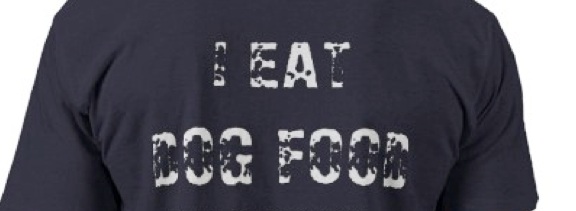What would happen if every employee had a clause in their contract that said, “You make it, you use it?” That’s called eating your own dog food, an expression describing the act of a company using its own products for day-to-day operations. A company that eats its own dog food sends the message that it considers its own products the best on the market.
The story that follows is a good example of what this really means. It is about a scientist leading the team that is developing a new medical product becoming the very first person to benefit directly from the product. The company (Pressure BioSciences, Inc., NASDAQ: PBIO) has its R&D operation located at the Venture Development Center.
Here’s how the story goes:
Day 1.
The scientist goes for a walk in the woods.
Day 4.
The scientist finds a small tick on his arm, partially engorged. The tick is removed.
Day 5.
The scientist notices a rash completely surrounding the site of the tick bite. A picture is taken of the bite and rash. The scientist brings the tick to his lab and asks that it be tested for the DNA of the bacterium Borrelia burgdorferi, the causative agent of Lyme disease.
In preparation for testing, the tick is initially processed by the company’s new SG3, a device that was recently developed to improve the safety, speed, and accuracy of processing difficult samples from tough, fibrous, and other difficult-to-disrupt tissues and organisms, such as ticks. The shredded tick is further processed by the company’s pressure cycling technology platform, then tested for the presence of B. burgdoreri DNA. The tick is determined to be potentially infectious.
The scientist had already sent the tick bite/rash picture to the medical director of a large testing lab, who is considered by many to be an expert in Lyme disease. The expert determines from the picture that the scientist has most likely been infected through the tick bite.
Day 6.
The scientist seeks medical attention, is advised that he may have been infected with Lyme disease, and is given appropriate antibiotics. Because he acted quickly, using tools that his own lab had developed, and sought advice and treatment, the scientist is not expected to develop Lyme disease.
We think this story is illustrative of what makes some companies work and others not. There are myriad factors in the success equation. One of the most important is the ability to get employees, customers and investors to take innumerable leaps of faith on the way to fulfilling their entrepreneurial visions.
This scientist, though, also knows not to eat too much of his own dog food. We’re certain he patted himself on the back for his accomplishment, then got right back to work, doubling up on his efforts.
The Venture Development Center is Boston’s leading startup incubator for technology and life science companies.

